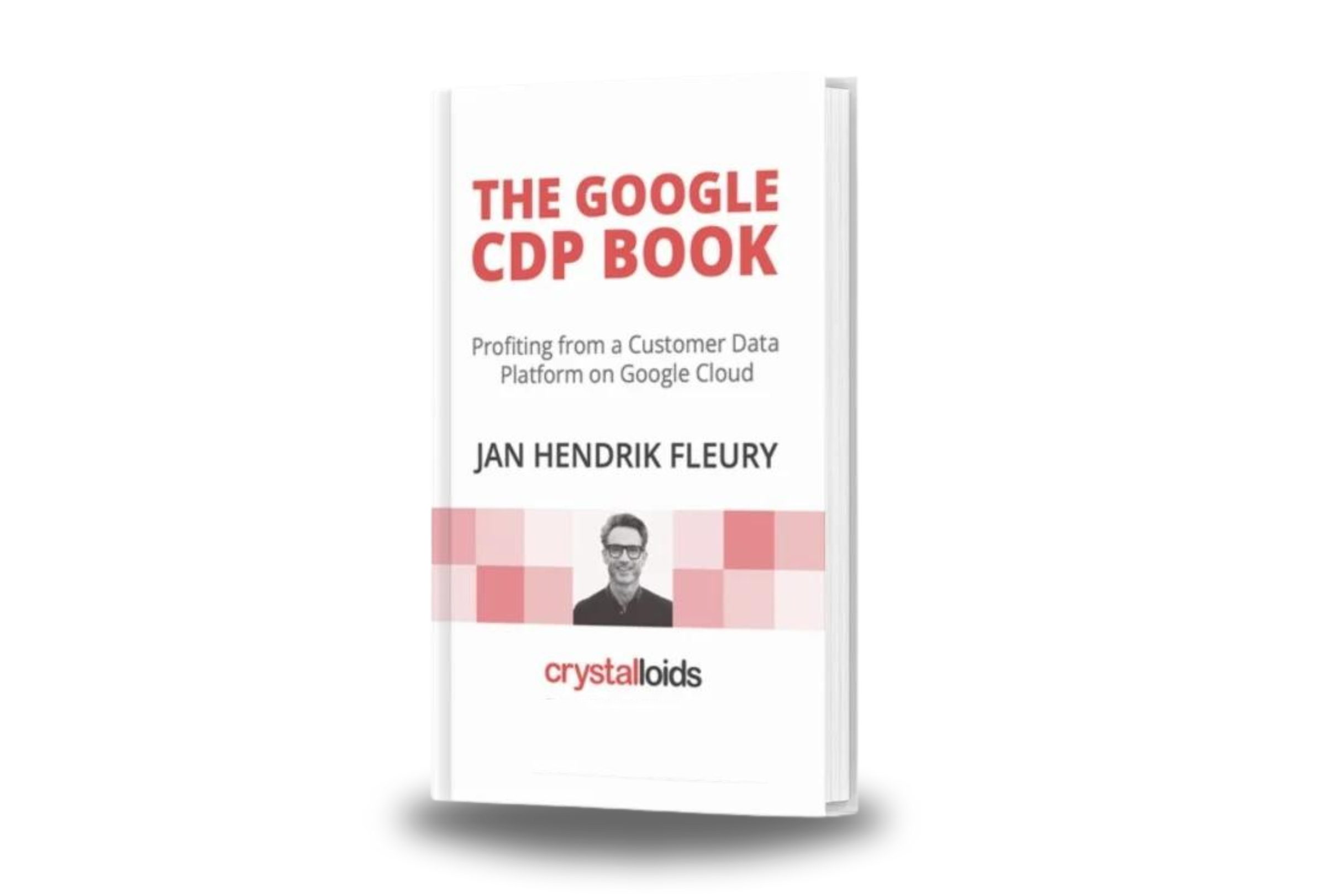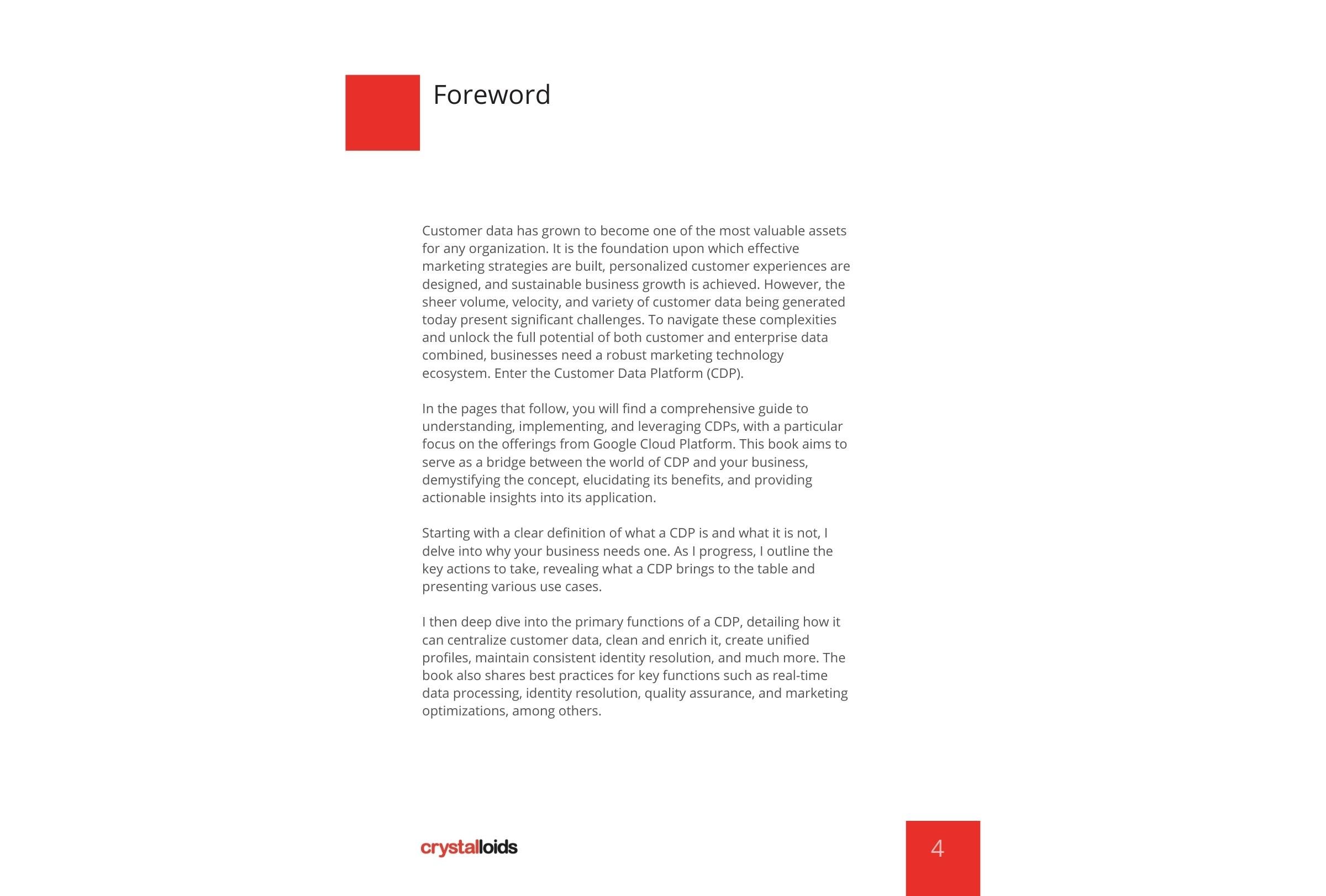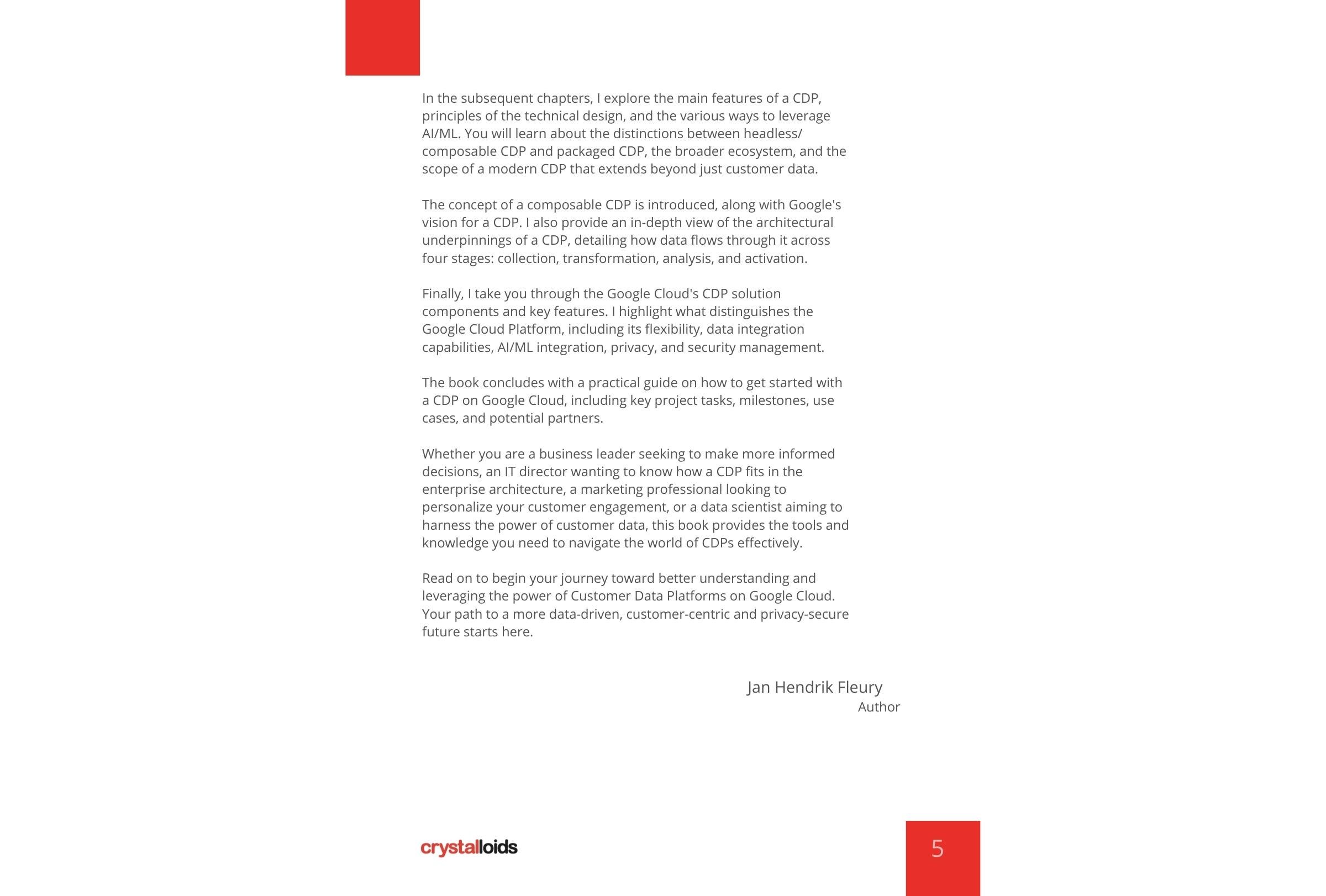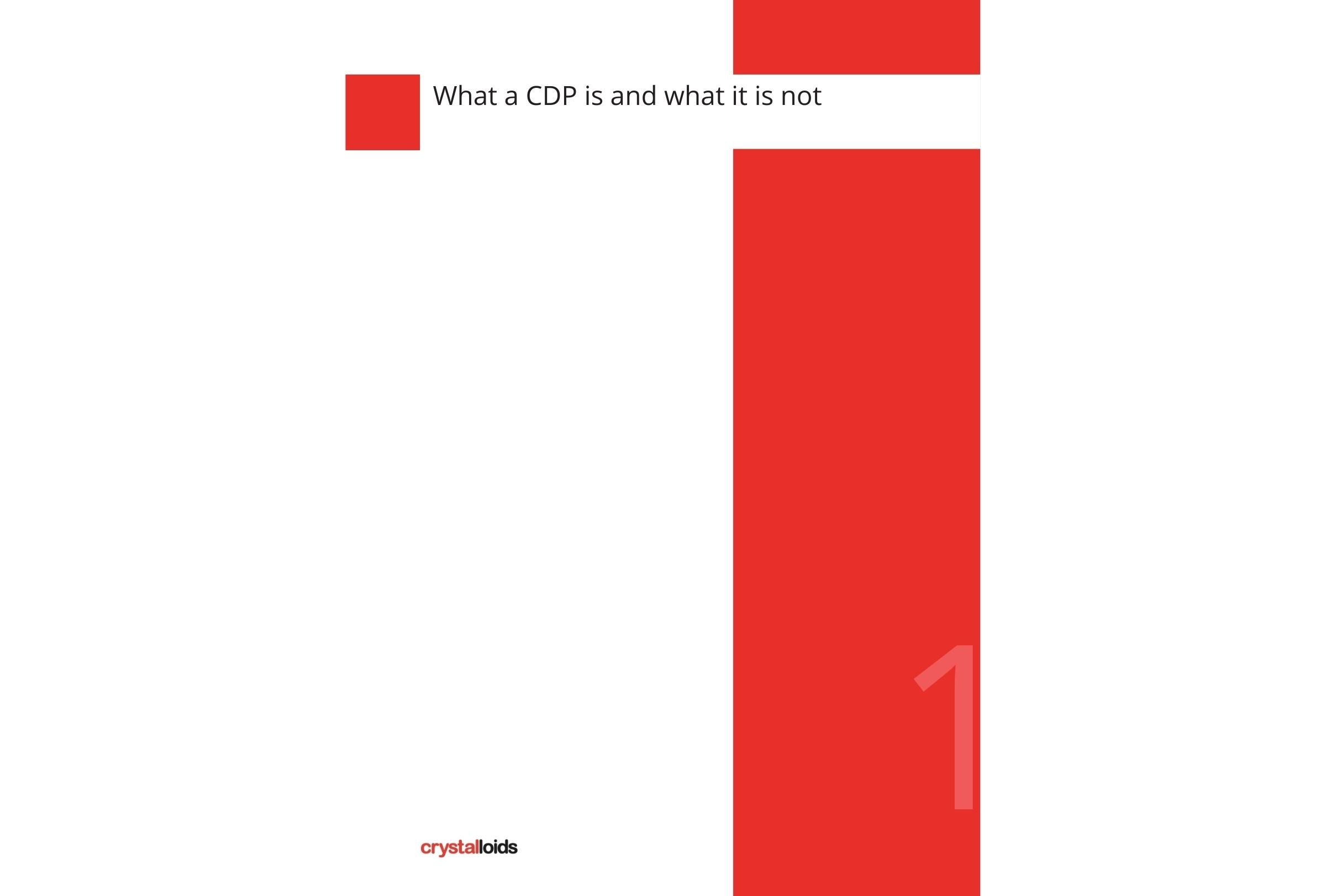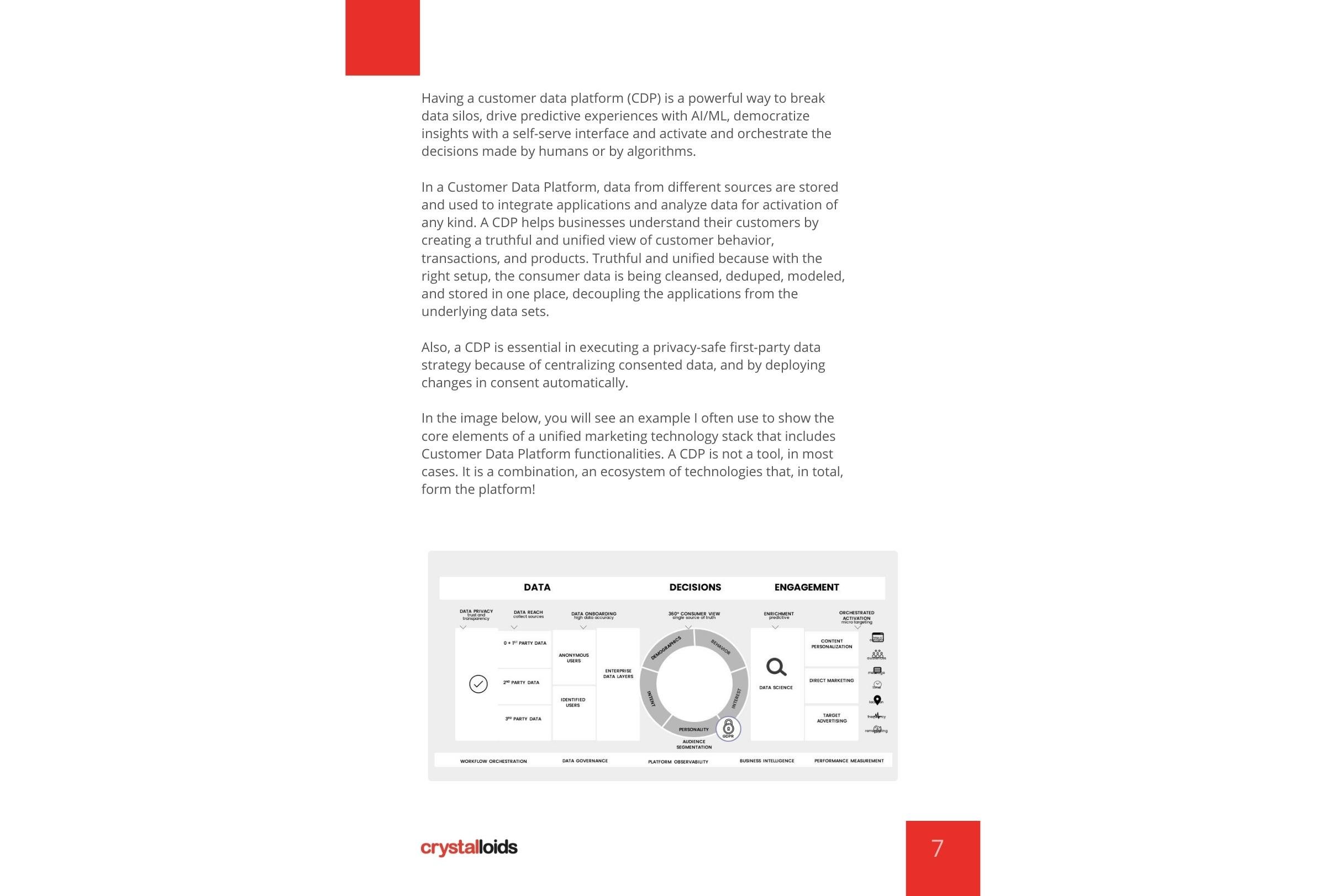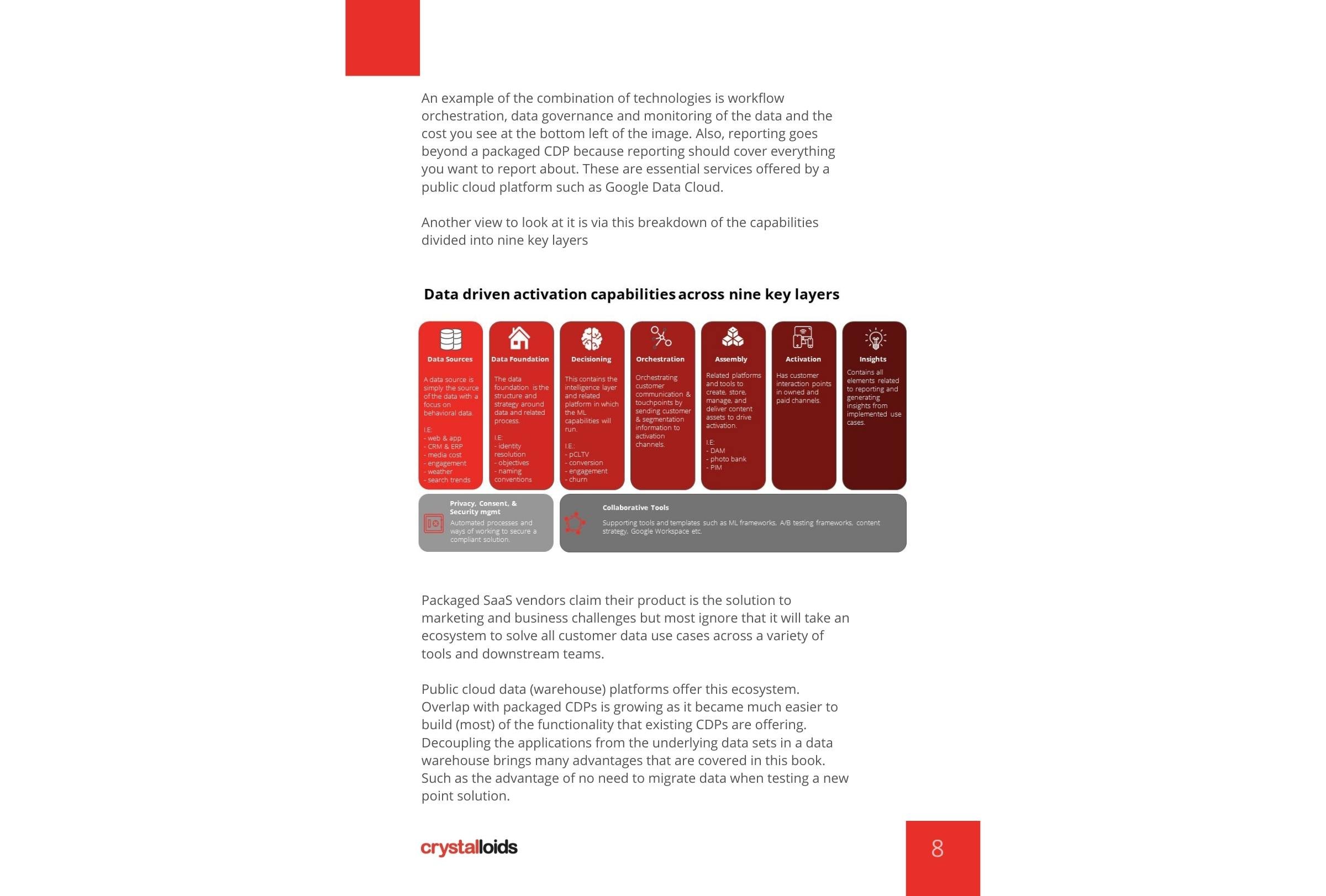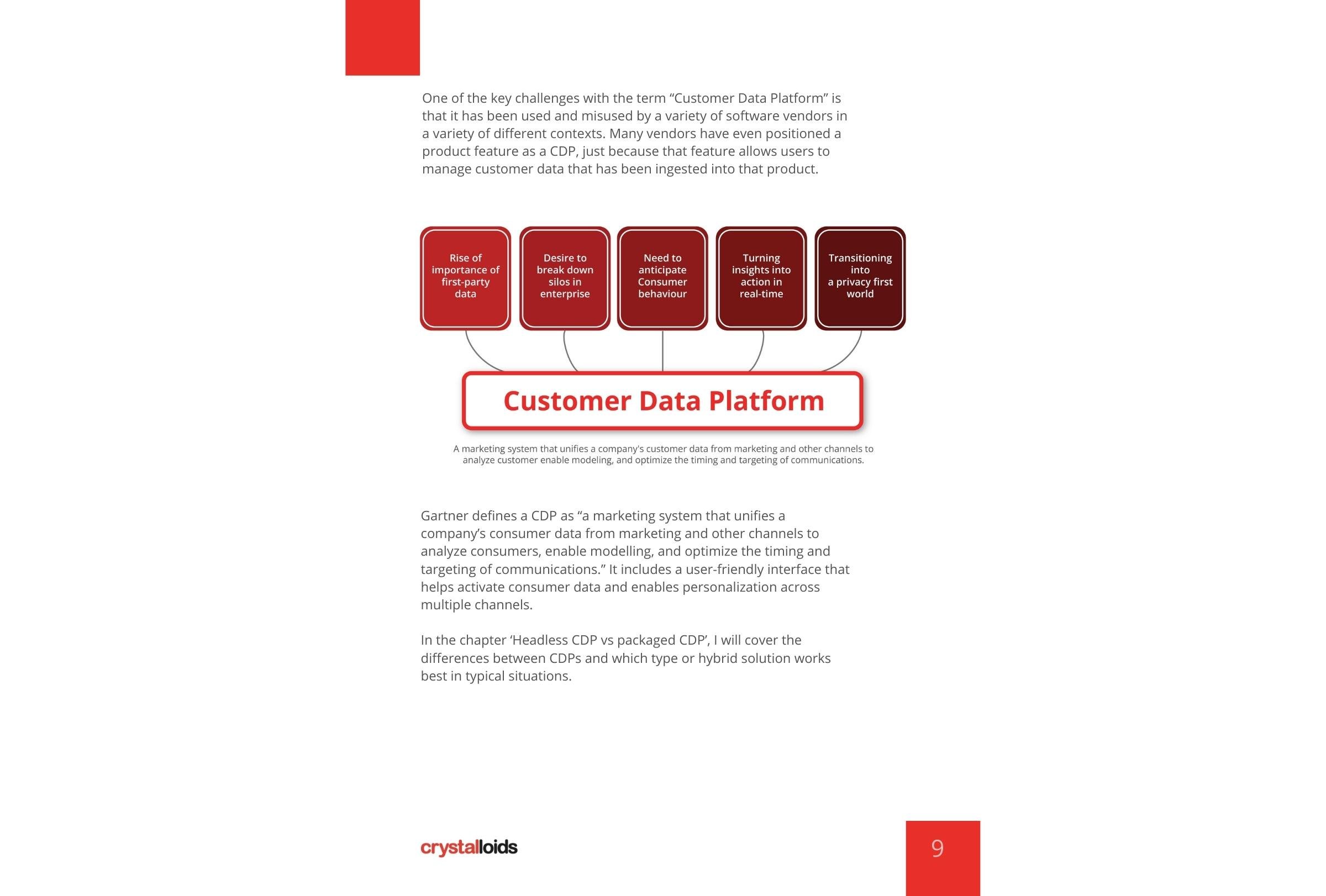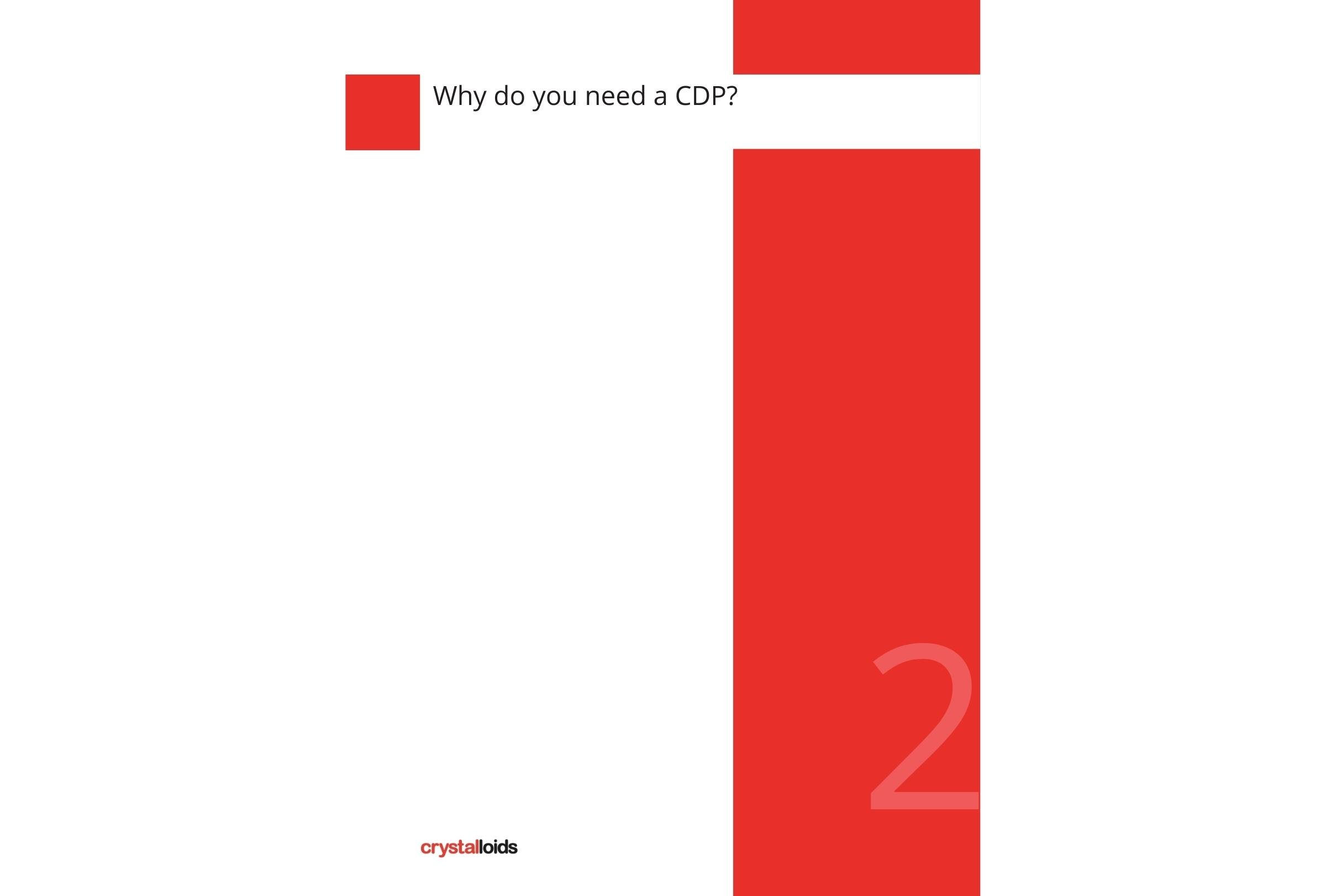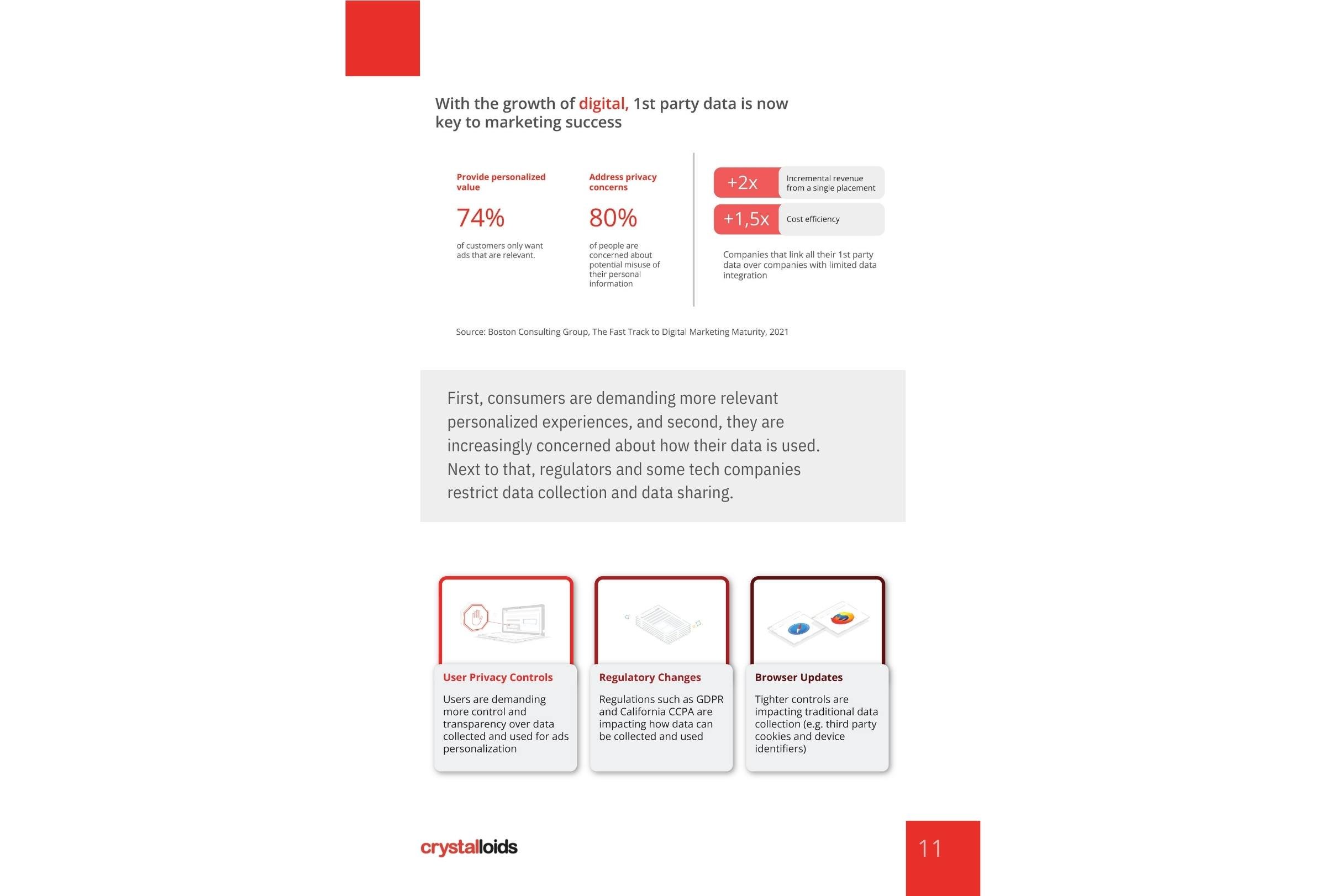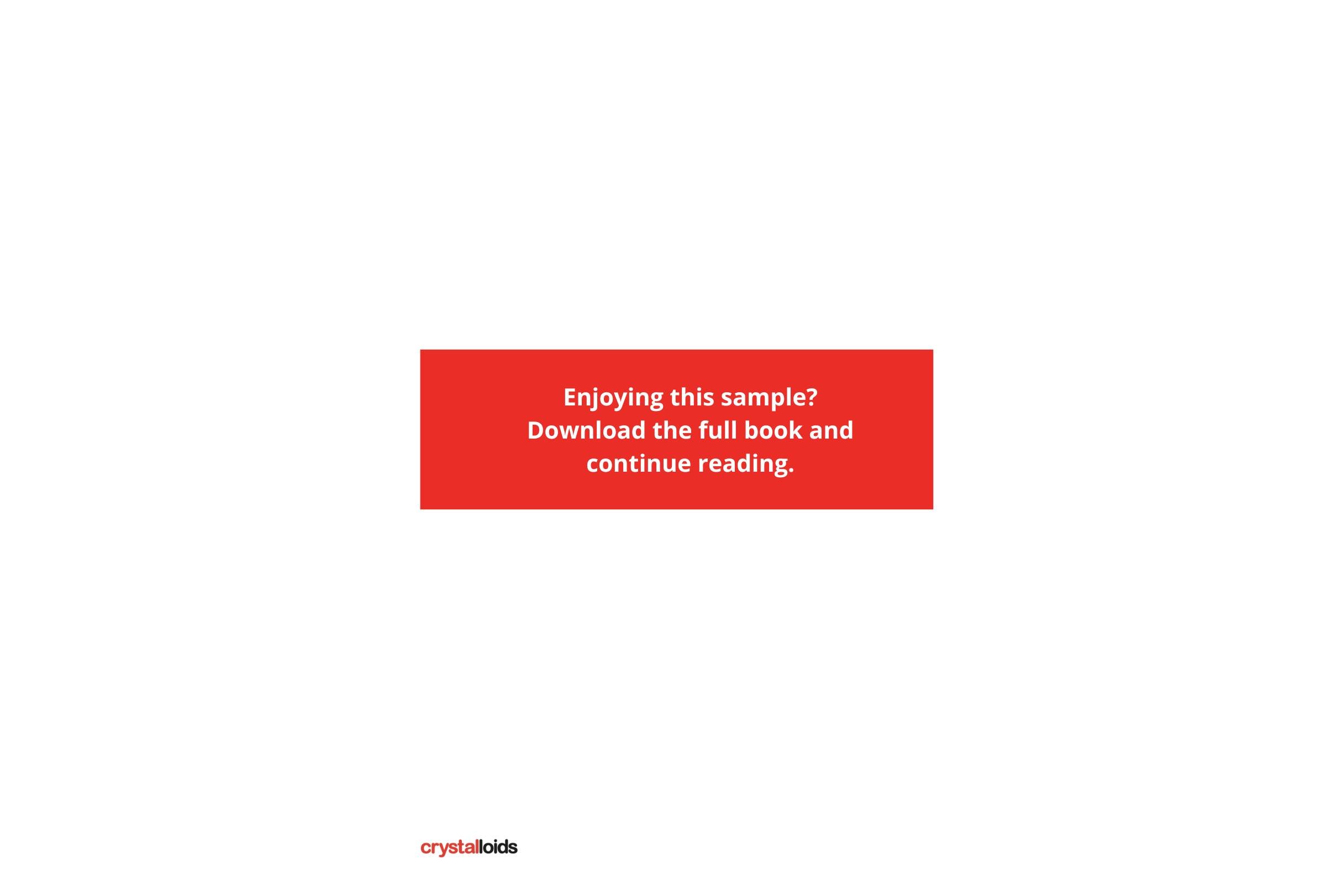The Google CDP book
Profiting from a Customer Data Platform on Google Cloud.
The value of customer data for businesses is undeniable. However, the scale and complexity of data, and the numerous point solutions available, requires robust, flexible, open and privacy safe solutions. Enter the Customer Data Platform (CDP) as an integral part of the marketing technology and enterprise ecosystems.
This book serves as your comprehensive guide to understanding, implementing, and leveraging CDPs with a special focus on Google Cloud Platform offerings.
Whether you're a business leader, an IT director, a marketing professional, or a data scientist, this book will equip you with the knowledge you need to navigate the world of Customer Data Platforms seen though the lens of the Crystalloids experiences with numerous clients.
Download your free copy
Book reviews
Frans Riemersma - Founder | Managing Partner of MartechTribe
“As a pioneer, Jan Hendrik has been exploring and leveraging the advantages of Public Cloud ecosystems as the foundation for CDPs for many years. In this book, he generously shares his valuable insights, best practices, and client examples. It is an essential read.”
Steve Loh - Benelux Data Analytics Practice Lead | Google Cloud
"In this comprehensive and insightful book, Jan Hendrik provides a clear and concise overview of a wide range of topics one needs to consider when building a CDP. He also detailed best practices and technical design on the Google Cloud Platform, which is easy to under- stand and to apply the concepts. Highly recommended for those who want to learn the latest CDP trends."
Gijs van Eysden - Head of Data & Measurement | Google
“This book provides a comprehensive guide to understanding, imple- menting, and leveraging CDPs, with a particular focus on the offerings from Google Cloud Platform. This book will provide you with the tools and knowledge you need to navigate the world of CDPs effectively.”
Key Learning Points:
-
Understanding the concept of a CDP: Learn the fundamental principles and functionalities of a CDP, with a clear definition and differentiation from other technologies.
-
Recognizing the need for a CDP: Discover why businesses require a CDP to drive effective marketing strategies, personalized customer experiences, and sustainable business growth in today's data-driven world.
-
Exploring use cases of a CDP: Explore real-world examples where CDPs are leveraged to enhance business outcomes and improve customer engagement.
-
Understanding CDP functions: Dive into the primary functions of a CDP, such as centralizing customer data, data cleaning and enrichment, creating unified profiles, and ensuring consistent identity resolution.
-
Best practices and features: Gain practical insights into best practices for CDP functions, including real-time data processing, identity resolution, quality assurance, and marketing optimizations. Also, explore the main features that a CDP offers for comprehensive data management and analysis.
Transforming the Customer Experience with CDPs and Generative AI
Customer Data Platforms (CDPs) and Generative AI are two emerging technologies that are rapidly transforming the way businesses interact with their customers. CDPs provide a unified view of customer data from all sources, while Generative AI can be used to create personalized experiences and automate tasks.
When used together, CDPs and Generative AI can help businesses to:
- Improve customer segmentation: Generative AI can be used to analyze customer data and identify patterns and trends that would be difficult to spot manually. This information can then be used to create more accurate and effective customer segments.
- Personalize customer experiences: Generative AI can be used to create personalized content, recommendations, and offers for each customer. This can help businesses to build stronger relationships with their customers and increase engagement.
- Automate tasks: Generative AI can be used to automate tasks such as customer support, marketing campaigns, and product development. This can free up employees to focus on more strategic initiatives.
